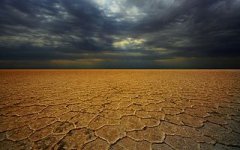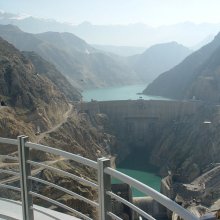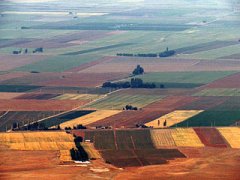Current Environmental Issues in the U.S
 David Michel
David Michel
Iran now ranks 114 of 132 countries evaluated on 22 environmental indicators, including water resources, air pollution, biodiversity and climate change, according to the 2012 Environmental Performance Index compiled by Yale and Columbia Universities.
Water
Iran’s fresh water supplies are now under unsustainable strains. Ninety percent of the country—which is slightly smaller than Alaska—is arid or semi-arid, and an estimated two-thirds of its rainfall evaporates before it can replenish rivers. As a result, Iran provides more than half of its water needs by drawing from underground aquifers, but public usage is rapidly draining the subterranean reservoirs. At current rates of overuse, twelve of Iran’s thirty-one provinces will exhaust their groundwater reserves within the next 50 years.
 Iran’s economic policies have exacerbated the problem. Groundwater is free to well owners and, due to government subsidies, users pay a fraction of the actual energy costs for pumping water to the surface. Iran annually pumps 4 billion cubic meters of groundwater that nature does not replenish.
Iran’s economic policies have exacerbated the problem. Groundwater is free to well owners and, due to government subsidies, users pay a fraction of the actual energy costs for pumping water to the surface. Iran annually pumps 4 billion cubic meters of groundwater that nature does not replenish.
Agriculture Imperiled
Iran’s water problems now risk undermining the national economy. The agricultural sector produces 10 percent of Iran’s GDP and employs a quarter of the labor force. It also supports national food security, a top priority since the 1979 revolution was carried out in the name of “the oppressed.” Indeed, Tehran subsidizes producers and consumers alike in a dual strategy to promote self-sufficiency in staple crops by bolstering both supply and demand.
Yet Iran’s food security is now imperiled because agriculture accounts for more than 92 percent of the country’s water use but only produces about 66 percent of the food supplies for 79 million people. Tehran has to import the rest. And the intensifying “water stress” threatens to further sap agricultural output, increase import bills and aggravate fiscal burdens. Agricultural demands are even subverting food security. Some areas, such as the central Kashan plain, have been rendered unfit for farming because of soil salinity, as groundwater overdrafts sink water tables.
Some areas, such as the central Kashan plain, have been rendered unfit for farming because of soil salinity, as groundwater overdrafts sink water tables.
Tough Choices
Competition over scarce water has already fueled conflict both within Iran and with its neighbors. In early 2013, farmers outside Isfahan destroyed a pump that diverted water from a local river to the city of Yazd some 185 miles away. Outraged at the loss of water, protestors refused to allow authorities to repair the pump, sparking week-long demonstrations, armed clashes with police, and water shortages and rationing in Yazd. In 2011, Iranian border guards exchanged fire with Afghan forces after crossing into Afghanistan to release water from an 18-mile irrigation canal from the Helmand River. And in the 1980s, the longest modern Middle East war was ignited by rival claims of control over the strategic Shatt-al Arab waterway between Iran and Iraq.
The escalating pressures on Iran’s water resources raise difficult choices for competing consumers. In the Karkheh Basin, water managers have to decide what to do about lower river flows—whether to retain water in the Karkheh Dam to build reserves for hydropower or whether to release water downstream for irrigation to a region considered to be Iran’s food basket.
Pollution
Iran faces other serious environmental risks. According to the World Health Organization, Iran has three of the world’s five most polluted cities—Ahwaz, Kermanshah, and Sanandaj—that are choked by annual levels of air pollution that are ten to eighteen times higher than WHO’s maximum guidelines. Because of its poor air quality nationwide, Iran ranked 86 out of 91 countries surveyed. In Tehran (see below) alone, contaminants in air pollution cause more than 5, 500 deaths each year from cardiovascular and respiratory diseases.
Global climate change is also expected to worsen Iran’s environmental woes. Changes in temperature and precipitation will lessen access to clean water, especially in rural areas, in turn generating more water-borne diseases, according to Iran’s Department of Environment. Higher temperatures and lower rainfall could cut cereal yields up to 30 percent by 2050. Climate change could reduce Iran’s total renewable water resources 15 percent to 19 percent by 2040-2050, according to a Dutch analysis. Iran’s annual water demand would then exceed its renewable supplies by more than 40 percent.









